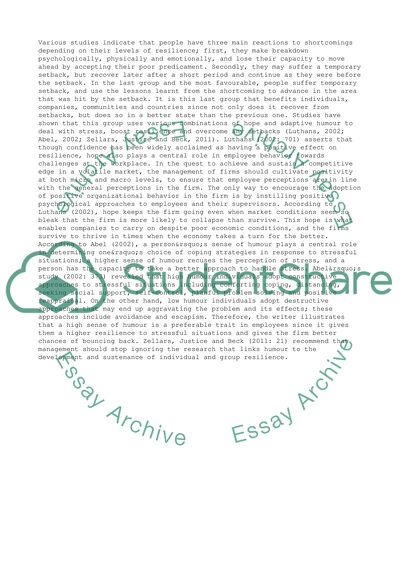Cite this document
(“The Resilience of a Firm - Effect of Hope, Stress and Adaptive Humour Research Paper”, n.d.)
The Resilience of a Firm - Effect of Hope, Stress and Adaptive Humour Research Paper. Retrieved from https://studentshare.org/business/1445536-research-report-on-resilience
The Resilience of a Firm - Effect of Hope, Stress and Adaptive Humour Research Paper. Retrieved from https://studentshare.org/business/1445536-research-report-on-resilience
(The Resilience of a Firm - Effect of Hope, Stress and Adaptive Humour Research Paper)
The Resilience of a Firm - Effect of Hope, Stress and Adaptive Humour Research Paper. https://studentshare.org/business/1445536-research-report-on-resilience.
The Resilience of a Firm - Effect of Hope, Stress and Adaptive Humour Research Paper. https://studentshare.org/business/1445536-research-report-on-resilience.
“The Resilience of a Firm - Effect of Hope, Stress and Adaptive Humour Research Paper”, n.d. https://studentshare.org/business/1445536-research-report-on-resilience.


